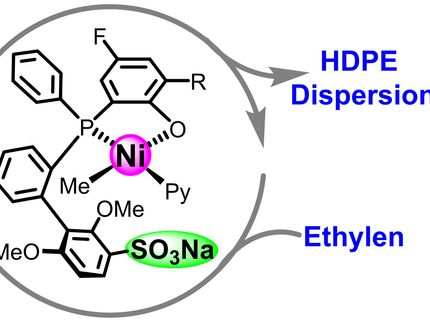Ethylene Market in Transition: Ceresana Analyzes World Market for the Most Important Basic Chemical
ethylene is the by far most important raw material in the petrochemical industry. About 130 million tonnes of ethylene were processed worldwide in 2013. Direct applications include, among others, the three polyethylene plastics HDPE, LLDPE, and LDPE as well as petrochemical intermediates, which are in turn mainly used for the production of plastics. The most important of these are ethylene oxide, ethylene dichloride and ethylbenzene. The new "Market Study Ethylene" by Ceresana offers a complete overview over this growth market. It analyses important recent influential factors in detail, for example the consequences of the shale gas boom in the USA. Forecast cover the time up until 2021.
Declining Oil Price Threatening Fracking
The shale gas boom in the USA has far-reaching consequences for the global ethylene market: The substantial decline of prices for ethane led to the construction of several new ethane crackers. In contrast to other feedstocks such as naphtha or propane, the cracking of ethane yields a rather high amount of ethylene. Should the current downward slide of oil prices continue, however, the US fracking industry might lose its foothold; Ceresana analyses the long-term implications.
Ethylene Prices Under Pressure
Forced by much higher production costs in Europe, several European produces have already announced to close crackers or to change over to using imported ethane as feedstock. Ceresana expects the global supply of ethylene to increase much more quickly than demand, due to massive capacity expansions. As a result, capacity utilization will fall, increasing pricing pressure. Therefore, Ceresana forecasts revenues generated with ethylene to rise by 3.2% p.a. until 2021 and thus at much lower growth rates than in the previous eight year period.
Increase in China and the Middle East, Reduction in Western Europe
Following a growth rate of 9.1% p.a. between 2005 and 2013, the Middle East became a center of the global ethylene industry. Production volume in this region is projected to increase by up to another 10 million tonnes until 2021. One of the main customers is China that imports large amounts of ethylene and ethylene-based plastics such as HDPE, LLDPE, and LDPE. Many producers of ethylene and polyethylene are dependent on these exports to China. The Chinese government, however, is trying to significantly increase self-sufficiency in regard to ethylene and its downstream derivatives. China intends to open additional naphtha crackers and to increase the use of coal in the production of olefins. Eastern Europe, dominated by development in Russia, and Africa are also expecting to see a high relative increase of production volume. As a response to pricing pressure, ethylene output in Western Europe will fall.
Basis for Plastics
The majority of all ethylene produced is consumed in the polyethylene industry. Depending on density and rigidity of the product, polyethylene is classified as either HDPE, LDPE or LLDPE. Two thirds of global demand for ethylene in 2013 stemmed from the production of these plastics. While demand for LDPE will increase only moderate, Ceresana forecasts a notable expansion of capacities for HDPE and LLDPE, in Asia-Pacific and the Middle East in particular. Another application area of huge growth potential is the production of ethylene oxide. Ethylene oxide is mainly used to produce ethylene glycol which is a pre-product for polyester. The production of textile fibers is growing significantly, especially in Asia. Additionally, producers of ethylene oxide are profiting from the substitution of glass by PET bottles. We forecast global demand for ethylene in the production of ethylene oxide to increase by about 3.2% per year.
Topics
Organizations
Related link
Other news from the department business & finance

Get the chemical industry in your inbox
By submitting this form you agree that LUMITOS AG will send you the newsletter(s) selected above by email. Your data will not be passed on to third parties. Your data will be stored and processed in accordance with our data protection regulations. LUMITOS may contact you by email for the purpose of advertising or market and opinion surveys. You can revoke your consent at any time without giving reasons to LUMITOS AG, Ernst-Augustin-Str. 2, 12489 Berlin, Germany or by e-mail at revoke@lumitos.com with effect for the future. In addition, each email contains a link to unsubscribe from the corresponding newsletter.



























































